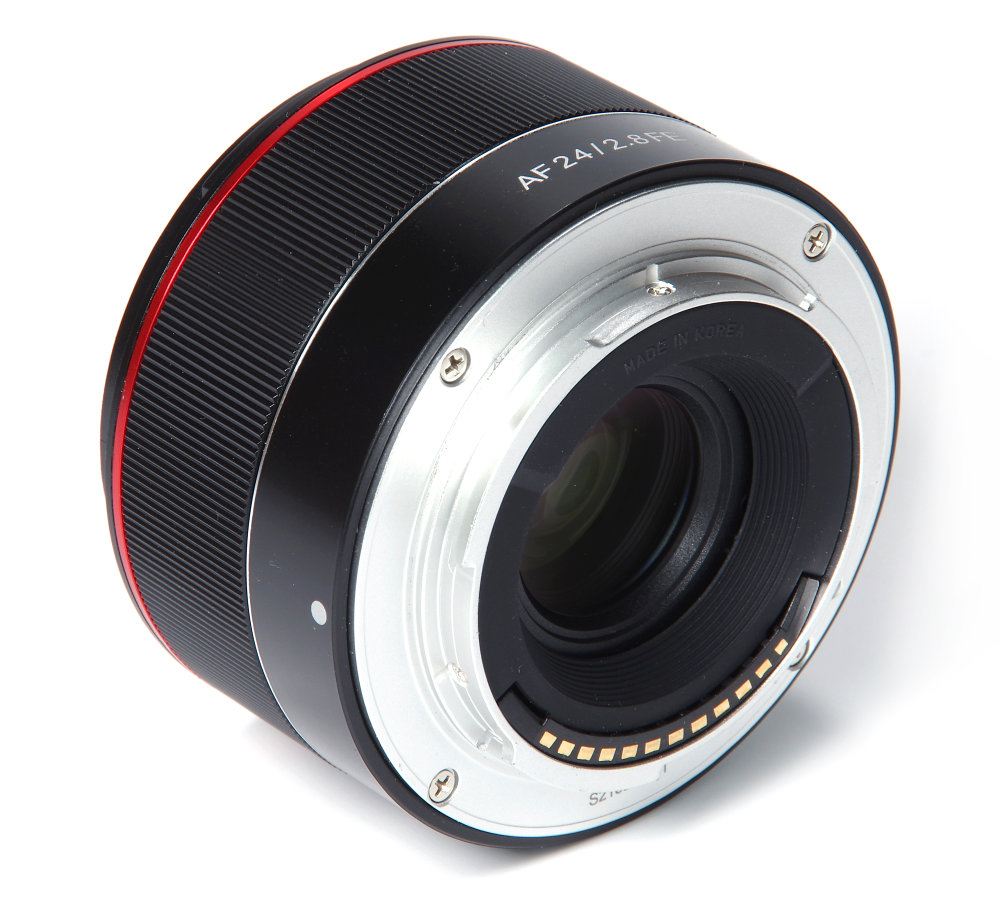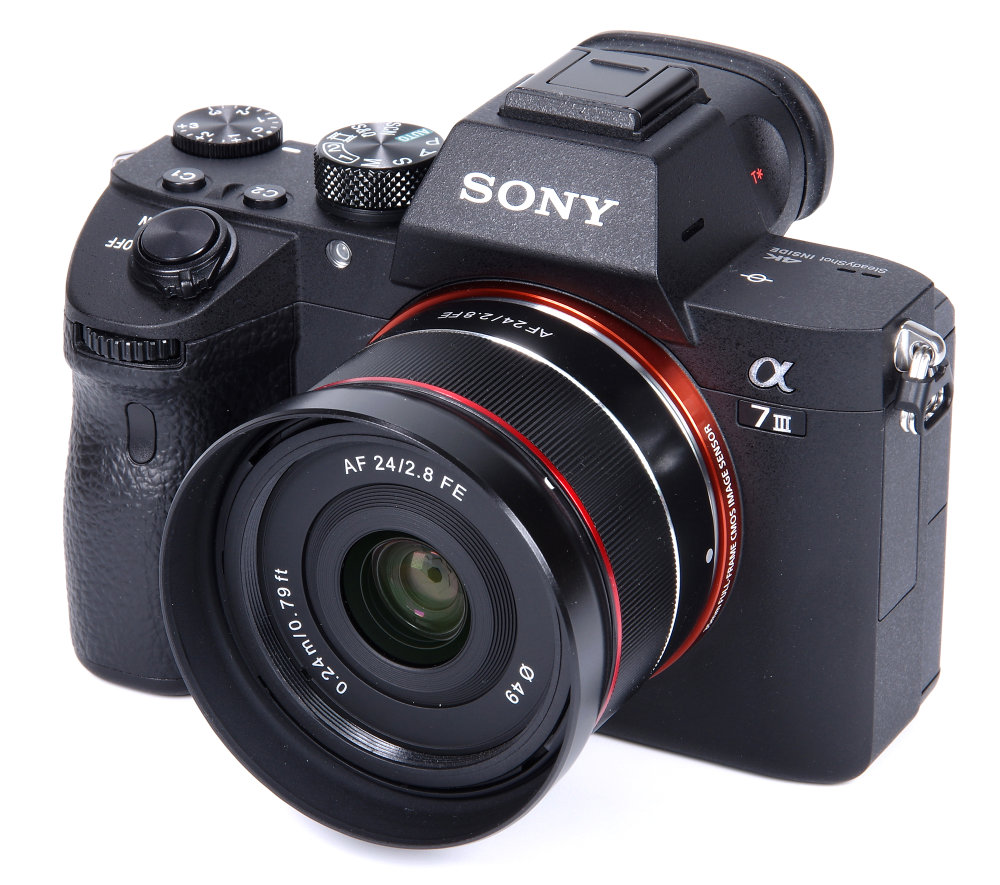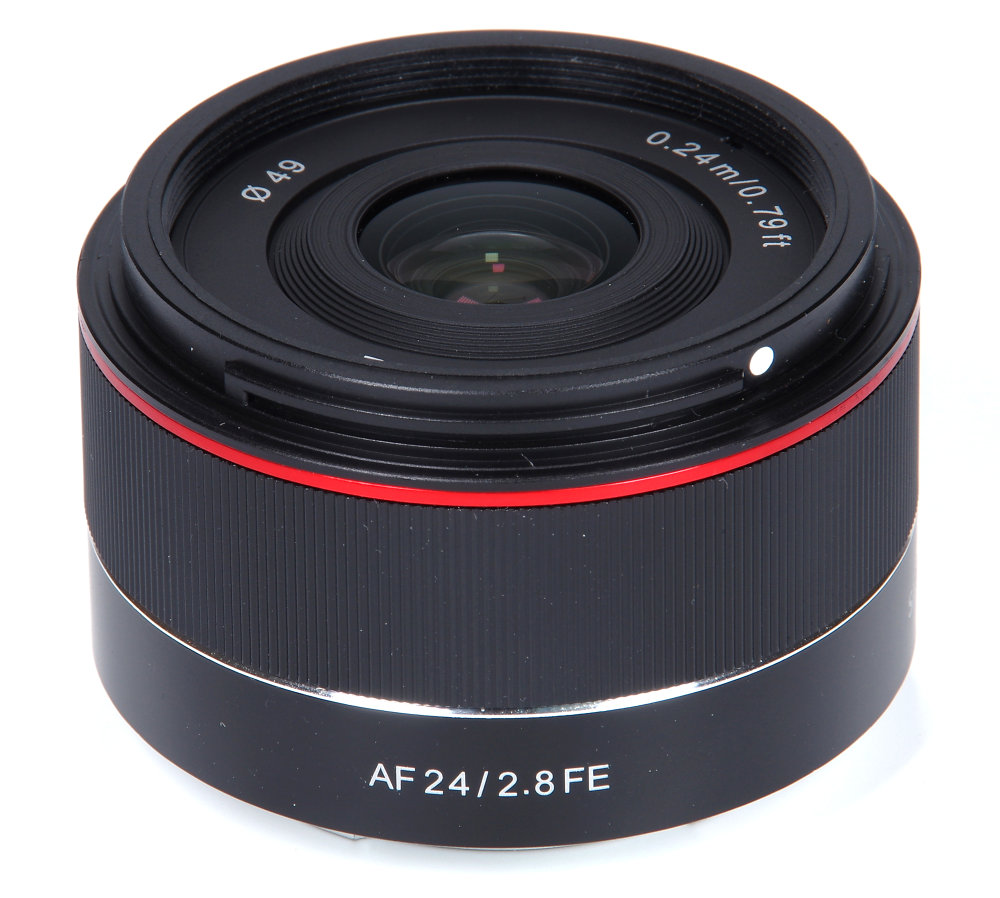Samyang AF 24mm f/2.8 FE Review
Samyang AF 24mm f/2.8 FE Handling and Features
Our tour of this diminutive (just 93g without hood or caps) pancake lens is likely to be very short indeed. There is very little of it, although it fits in well with the A7 III body to make a very compact and light package. The bayonet lens hood is of necessity very shallow, and unlikely to make much of a difference to many shots. Nonetheless, it will help in taking any knocks and any lens hood is better than no lens hood for suppressing flare. Otherwise, we rely on Samyang's UMC coating. The hood can be reversed for storage, but there is little point as it hardly takes up any significant room even in the active position. Within the bayonet for the hood we find a standard 49mm filter thread.
There is a very smooth electronic manual focus ring and this can be used in MF mode or in the DMF mode where MF can be used to actively over-ride AF. These functions are activated in the camera menus. Focusing is down to 0.24m, or 0.79 feet, a maximum magnification of 0.13x. Apart from the lens name engraved on the barrel, that is it. Small primes such as this could still benefit the user by having a distance and depth of field scale, enabling easy setting of hyperfocal distance, but sadly no room has been found to provide these. The upside is likely to be a more compact and more sophisticated optical construction is possible, along of course with AF.
Optical construction is 7 elements in 7 groups, quite conventional on the face of it, but in fact this lens has the hidden secret of 3 Aspheric and 2 HR (High refractive index) elements, making it rather more sophisticated. This is clearly reflected in the performance, as we shall see.
In use, the lens handles beautifully and totally reliably, snapping into focus without delay and with no sign of indecision. It feels very good indeed when used with the A7 III. It is especially suited to street photography, landscape and architectural shots. Groups can be effectively shot, but single portraits need a little care to avoid exaggerating the features. Some classic lenses have also had snapshot settings indicated, enabling a fixed focus approach to say street photography, but that is not possible here without the appropriate scales on the lens for distance and depth of field. There are plenty of compensations for this and of course plenty of alternative techniques to employ.

Add your message
Please login here or if you've not registered, you can register here. Registering is safe, quick and free.
photodo Stats
428 MTF tests
74 in-depth photodo reviews
100+ users join each day
Help the lens community by reviewing or rating a lens today via our lens search
Latest Lens Reviews
- Chinon 28mm f/2.8 Vintage Lens Review
- Canon EF 70-200mm f/4L IS II USM Lens Review
- Samyang AF 85mm f/1.4 EF Review
- Sigma 70mm f/2.8 DG Macro Art Review
- Samyang AF 24mm f/2.8 FE Review
- Meike 50mm f/1.7 Review
- Tamron 70-210mm f/4 Di VC USD Review
- Lensbaby Burnside 35mm f/2.8 Review
- Asahi Super Takumar 50mm f/1.4 Review
- Asahi Super-Multi-Coated Takumar 135mm f/3.5 Review


